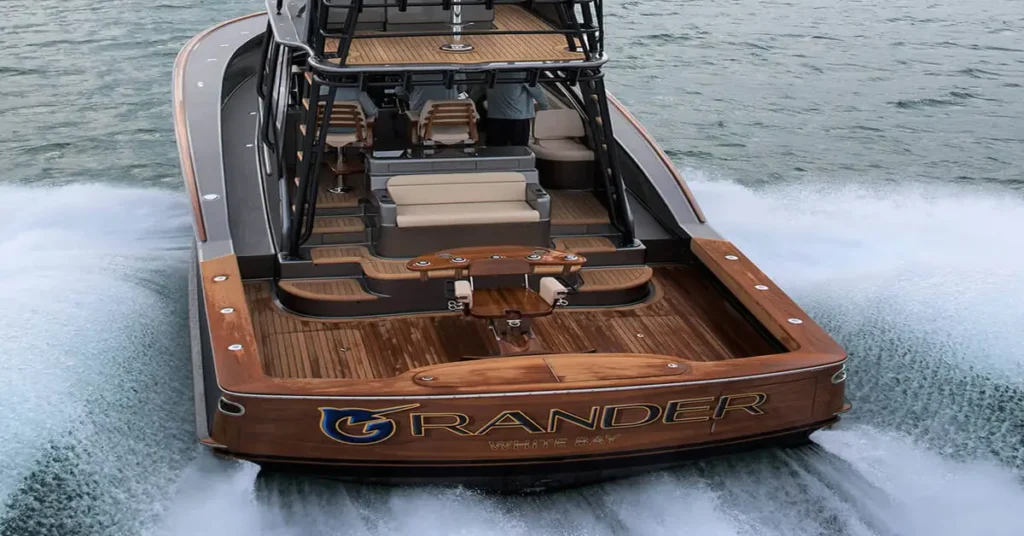Have you ever wondered What Boat Draft is and why it’s a make-or-break detail for your maritime adventures? This crucial concept is the invisible line separating a smooth sail from a sticky situation, measuring how shallow the waters can be before your boat’s belly grazes the seabed.
Get ready to dive into the depths of boat draft knowledge—this guide promises to keep you afloat with expert insights and navigational know-how that will have you sailing confidently!
Understanding Boat Draft
When navigating waters, I need to know exactly what is boat draft as it directly influences where a boat can travel and how it performs.
Definition and Importance
Draft refers to the distance from the waterline to the lowest point of a boat’s hull. This measurement is crucial because it dictates the minimum depth of water a boat requires to float without touching the bottom.
The importance of understanding draft cannot be overstated; if I miscalculate my boat’s draft, I could find myself stuck or cause damage to the vessel.
Measuring Draft
To measure the draft, I find the vertical distance between the waterline and the deepest part of the boat underwater. This can change according to the boat’s load; more weight typically means a deeper draft. Knowing the maximum draft helps to prevent underwater mishaps and ensure safe passage.
Draft Types
Generally, there are two main types of draft:
- Shallow Draft: A boat with a shallow draft sits higher in the water, allowing me to sail in more confined waters without fear of grounding.
- Deep Draft Vessel: Such a boat has a deeper draft, requiring deeper waters but often offering more stability in rough conditions.
The draft also varies during the operation:
- Static Draft is what I would measure when the boat is at rest and unladen.
- Mean Draft is the average between the forward and aft draft readings, which gives me a good estimation of the boat’s overall draft.
Knowing my boat’s draft limit is essential for planning trips, avoiding mishaps, and accessing a variety of waterways.
Design Factors Affecting Draft

When we talk about boat draft, we’re referring to the vertical distance between the waterline and the lowest point of a boat’s hull. It’s how much of the boat is underwater. The boat’s design significantly impacts this measurement, so let’s take a closer look at the hull shape and design, as well as the keel type and function.
Hull Shape and Design
The hull shape plays a critical role in determining a boat’s draft. A flatter hull usually has a shallower draft, making it ideal for navigating in calm, shallow waters. Conversely, a deep V-shaped hull, known for slicing through rougher water, will have a deeper draft due to the angle of the deadrise – the angle between the hull and a horizontal plane.
Also, the beam, or the width of the boat at its widest point, can affect draft. A wider beam can distribute weight over a larger area, promoting a shallower draft.
Keel Type and Function
The keel serves as a stabilizing structure on the bottom of the hull and can vary in size and shape. A full-length keel, which runs along much of the hull’s bottom, can deepen a boat’s draft but provides excellent stability, especially in rough waters.
On the other hand, a fin keel, which is shorter and more streamlined, may reduce draft, allowing for easier maneuverability in different sailing conditions. The keel type is integral to a vessel’s performance and draft.
Operational Aspects of Draft

When we talk about “what is boat draft?” We’re talking about how deep a boat sits in the water, which directly affects many facets of its operation. Draft is a key element in navigating different marine environments and managing a boat’s performance.
Navigating Shallow Waters
Understanding the draft is crucial in shallow waters to prevent the vessel from running aground. The static draft tells me how deep the boat can safely navigate without the added weight of cargo and passengers. Boats designed with a shallow draft are better suited for these conditions, offering safe and agile movement close to shore or where underwater obstacles are common.
Load and Weight Distribution
The loaded draft of a boat changes as I add weight, altering how much of the hull is submerged. Proper weight distribution is vital — loading the vessel unevenly can cause it to list or pitch, which affects both the draft and the overall handling characteristics. I need to ensure that the load-carrying capacity is not exceeded, as this will influence stability and could compromise safety.
Ballast and Stability
Using ballast, I can improve my boat’s stability. Typically, ballast is weight placed in the lowest part of the boat to create a low center of gravity. Adjusting ballast influences the draft, affecting the boat’s performance in various water conditions. Balancing the ballast is a delicate act: too much can increase draft excessively, while too little may render the vessel unstable.
Draft Impact on Boat Performance

When I think about boat draft, I consider that it’s the submerged portion of a boat’s hull and how deeply it impacts safety and efficiency during a voyage.
Safety and Maneuverability
The draft of a boat influences its stability and maneuverability in water. A deeper draft often means a boat is more stable in rough waters, but it can also make it harder to navigate in shallow areas. Here, the rudder and propeller become crucial for steering precision if they’re the lowest parts. Every trim adjustment matters too, helping to balance draft with stability needs.
Speed and Efficiency
Regarding speed and efficiency, the relationship is quite direct: less draft typically leads to higher speed since there’s less hull resistance against water. However, this trade-off can affect fuel consumption. A well-adjusted draft optimized for the vessel’s design enables a smoother journey with effective power usage.
I always remember to balance the boat’s loaded draft with its intended purpose for optimal performance.
FAQ – Boat Draft

When you’re looking into what is boat draft, it’s all about the depth a vessel reaches beneath the waterline. It’s a critical detail that affects where I can navigate and anchor my boat.
How much draft does a boat need?
The amount of draft my boat needs depends on where I plan to navigate. If I frequent shallow waters, I’ll need a boat with a shallow draft to avoid running aground. Conversely, deep waters such as the open ocean can accommodate boats with a deeper draft, which often improves stability.
How do you determine a boat draft?
To determine a boat’s draft, I measure the distance from the waterline—the part of the boat that sits right at the water’s surface—to its lowest point underwater. Measurements should be taken when the boat is stationary and not loaded with passengers or cargo.
What is the draft clearance of a boat?
The draft clearance of a boat is the vertical distance from the waterline to the lowest part of the boat’s hull. It indicates the minimum depth of water the boat needs to operate without the risk of the hull scraping the bottom. It’s crucial for ensuring my boat doesn’t touch the bottom in varying water conditions.
Set sail on the conversation: Share your experiences and tips on What is Boat Draft in the comments below and help fellow sailors navigate with knowledge!



